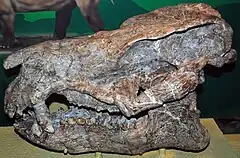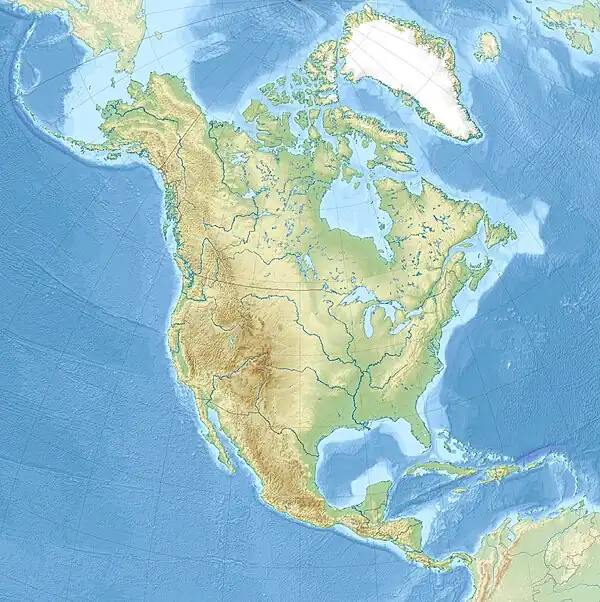| DeBeque Formation | |
|---|---|
| Stratigraphic range: Late Paleocene-Early Eocene (Clarkforkian-Wasatchian) ~ | |
 Fossil from the DeBeque Formation | |
| Type | Formation |
| Sub-units | Atwell Gulch Member |
| Lithology | |
| Primary | Claystone |
| Location | |
| Coordinates | 40°00′N 107°54′W / 40.0°N 107.9°W |
| Approximate paleocoordinates | 44°48′N 91°48′W / 44.8°N 91.8°W |
| Region | |
| Country | |
 DeBeque Formation (the United States)  DeBeque Formation (Colorado) | |
The DeBeque Formation is a geologic formation in Colorado's Piceance Basin,[1] preserving fossils which date back to the Late Paleocene to Early Eocene period (Clarkforkian to Wasatchian in the NALMA classification.[2][3] Examples of these fossils are held in the University of Colorado Museum of Natural History.[4]
Wasatchian correlations
See also
References
- ↑ Bown & Kihm, 1981
- ↑ DeBeque Formation at Fossilworks.org
- ↑ Hirsch et al., 1997
- ↑ "Collections". Museum of Natural History. 24 May 2016. Retrieved 10 November 2019.
Bibliography
- Hirsch, Karl F.; Allen J. Kihm, and Darla K. Zelenitsky. 1997. New Eggshell of Ratite Morphotype with Predation Marks from the Eocene of Colorado. Journal of Vertebrate Paleontology 17(2). 360. . ISSN 0272-4634 JSTOR 4523812 doi:10.1080/02724634.1997.10010980
- Bown, Thomas M., and Allen J. Kihm. 1981. Xenicohippus, an Unusual New Hyracotheriine (Mammalia, Perissodactyla) from Lower Eocene Rocks of Wyoming, Colorado and New Mexico. Journal of Paleontology 55(1). 257. . ISSN 0022-3360 JSTOR 1304347
Further reading
- A. J. Lichtig and S. G. Lucas. 2015. Paleocene-Eocene turtles of the Piceance Creek Basin, Colorado. New Mexico Museum of Natural History and Science Bulletin 67:145-152
- A. J. Kihm. 1984. Early Eocene Mammalian Fauna of the Piceance Creek Basin. Northwestern Colorado
- K. P. Schmidt. 1938. New crocodilians from the upper Paleocene of western Colorado. Geological Series of Field Museum of Natural History 6(21):315-321
This article is issued from Wikipedia. The text is licensed under Creative Commons - Attribution - Sharealike. Additional terms may apply for the media files.
